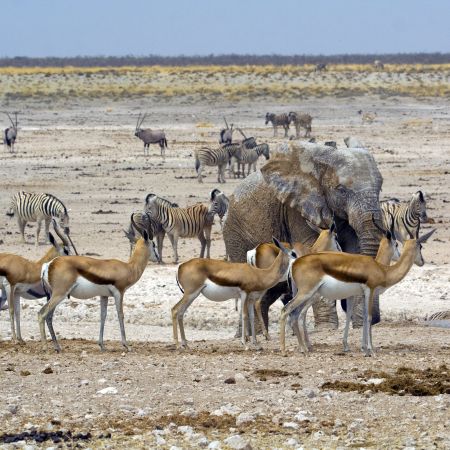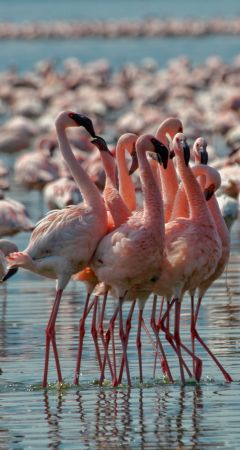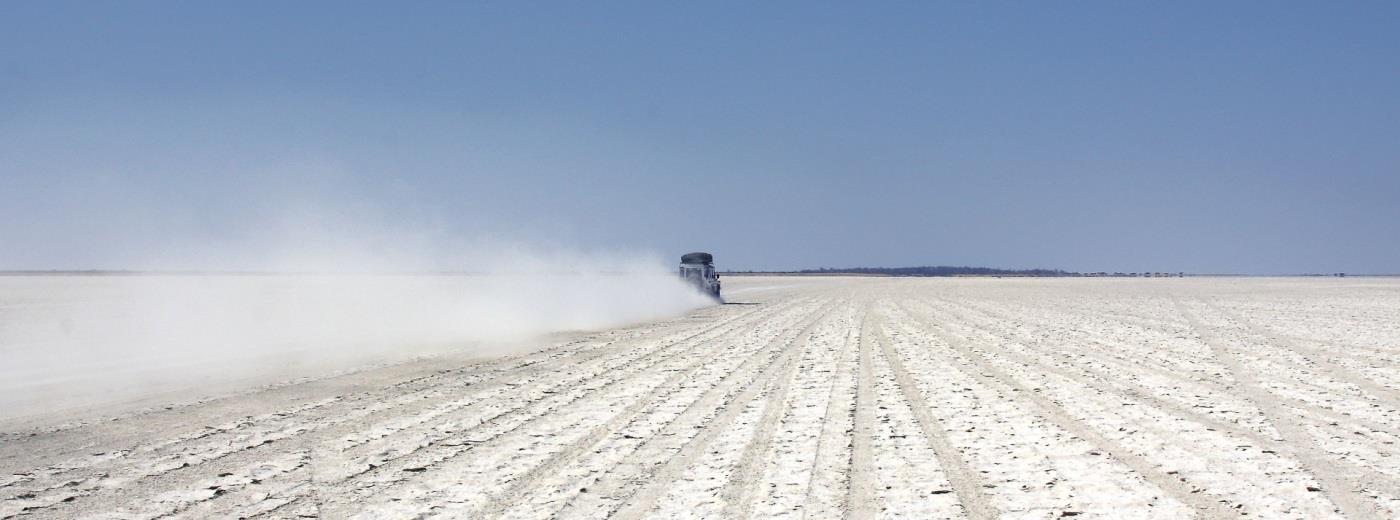The largest collection of salt pans in the world
The Makgadikgadi Pan comprises of 3 separate salt pans - Sowa (Sua), Nxai and Ntwetwe - which together cover 12,000 square kilometres of the north-eastern part of Botswana, making this the largest collection of salt pans in the world.
 For the majority of the year, especially during the sizzling hot winter months, the stark whiteness of the vast pans reflects against the brilliant blue sky, creating eerie heat mirages that shimmer enticingly and fool the brain into thinking imaginary lakes exist on the horizon.
For the majority of the year, especially during the sizzling hot winter months, the stark whiteness of the vast pans reflects against the brilliant blue sky, creating eerie heat mirages that shimmer enticingly and fool the brain into thinking imaginary lakes exist on the horizon.
Then, in late November/early December time, the rains come. The dry pan is transformed into a teeming mass of wildlife, as the animals move into the area to seek much needed water, which gathers in depressions in the pan and remain long after the rains have stopped in March - sometimes until April or even May.
The outlying fringes of the pan become lush with green grass, enticing further wildlife to the area, including large herds of wildebeest, zebra and antelope in their thousands. Needless to say, there is also a healthy number of predators such as lion, cheetah and hyena, who are always present when there is an abundant of 'food' around!
Flamingos, white pelicans, ducks, geese and other water birds also flock to the pan, to nest and feed on the thousands of tiny crustaceans that have been dormant during the dry period.
A Brief History of the Region
 The pans were once a superlake that was formed more than 5 million years ago, which used to cover 80,000 square kilometers of land, and had a depth of 30 meters (100 feet). But 10,000 years ago, the lake started to dry up as climatic changes occured, and today all that is left are the large salt pans that are truly one of Africa's most stunning and magical natural features.
The pans were once a superlake that was formed more than 5 million years ago, which used to cover 80,000 square kilometers of land, and had a depth of 30 meters (100 feet). But 10,000 years ago, the lake started to dry up as climatic changes occured, and today all that is left are the large salt pans that are truly one of Africa's most stunning and magical natural features.
The Makgadikgadi Pans National Park
Only a small section of the entire Makgadikgadi Pan (4,900 square kilometers) are within the Makgadikgadi Pans National Park boundaries - with the 2 largest of the pans, the Ntwetwe Pan and Sowa Pan - falling outside of the Park boundaries. The Park was formed in the early 1970s, in the hope of protecting the entire ecosystem.
The Nxai Pan National Park
The Nxai Pan National Park adjoins the northern boundary of the Makgadikgadi Pans National Park, and is where the desert meets the delta, so you often see elephants surrounded by resident herds of springbok. Because of its location, during the summer months large herds of zebra and wildebeest migrate down from the northern parts of Chobe and the Okavango Delta, and join with the resident oryx, springbok and impala. Unsurprisingly, predators such as lion, leopard, wild dog and cheetah are also found here.
Getting There
From Maun, you can take a road transfer to your accommodation (which takes about 2 hours), or otherwise there are airstrips at both Gweta (near Ntwetwe Pan) and Nata (near Sowa Pan), which affords you a birds-eye view of the pans.
It is very easy to combine a few nights here with a safari in the Okavango Delta, then onto Chobe, and ending in Victoria Falls, which makes a lovely 10 day trip and something that will be a wealth of holiday highlights from start to end.

